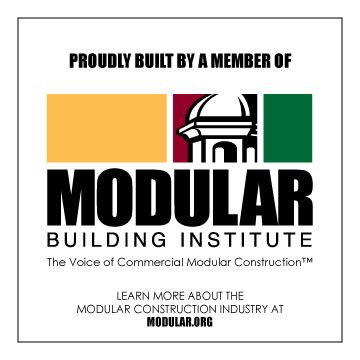What is Aging in Place?
Aging in place is about allowing seniors to live in a home of their choice, remaining comfortable and independent as long as possible. For many families, building an ADU for seniors—also known as a granny flat or in-law suite—has become the ideal solution for those seeking safe, accessible, and affordable housing for aging parents.
Aging in place modifications include:
- Accessible bathtubs
- Increased railings
- Removing furniture that could be a hazard or cause a fall
- Having no lip or threshold between doorways
- Adding ramps to outdoor staircases
- Increasing the size of doorways to make them wheelchair accessible
A new resource that has helped make aging in place a more practical solution is an Accessory Dwelling Unit. An ADU is a tiny home that shares the same property as a single-family home. They just became a lot easier to build in California when legislation was passed allowing two units to be built on single-family properties.
These smaller spaces are perfect for facilitating aging in place. They can be customized for foreseeable needs like accessibility and convenience.
We know that choosing the best option for senior living can be difficult. That is why comparing options can help people make the best-informed decisions.
Aging in Place vs. Nursing Homes
One of the many options for senior living is a nursing home. Typically nursing homes are beneficial for individuals who have more complex health issues and need around-the-clock assistance from more skilled professionals like nurses or physicians.
However, not all circumstances are the same, so these guidelines may not apply to all. Everyone has unique needs that determine their best senior living option.
That being said, here are two factors that can strongly influence this important decision:
Cost: Aging in Place vs. Nursing Home
According to a survey done by MetLife Mature Market Institute (2016), the average cost per day in a semi-private room in a nursing home in California is $249.
This totals to a total cost of around $90,885 per year.
If one wanted a private room, those prices would shoot up to $330 per day, or $120,450 per year.
Compare that to aging in place in a granny flat: On average, the cost to build a stand-alone unit is $220-$350 a square foot.
While these are ballpark numbers that can vary by build, location and architect fees, it ranges from a total cost of about $130,000 – $250,000 to build a granny flat.
While nursing homes provide 24/7 skilled care for those with complex health needs, building an ADU for seniors offers significant advantages for those who want to stay near family. The cost to build an ADU is often offset by increased property value and the ability to provide personalized, family-centered care. For details on typical costs and financing, visit our ADU Financing page.
Care: Aging in Place vs. Nursing Home
One of the major benefits of a nursing home is that comes with around-the-clock care. Nursing homes offer personalized assistance like help getting out of bed, bathing, eating, or other special attention.
They also offer assistance for more complex health conditions like a skilled nurse or a physical or speech therapist.
This personalized attention is great for individuals who have disabilities or special daily needs. Also, if family members do not have the time or resources to take care of their elderly family members to this extent, nursing homes can be a very good option.
In contrast, if a family has enough time to help care for their elderly family members, aging in place in a granny flat can also be very beneficial.
Many times, immediate family members occupy the main house: The lack of a geographical barrier allows individuals in need of assistance immediate help if something were to happen.
Aging in Place vs. Assisted Living
Assisted living differs from a nursing home primarily because of the different services provided. Many times, residents of nursing homes have more complex health problems, whereas assisted living communities generally require more custodial care.
Cost: Aging in Place vs. Assisted Living
According to the 2015 Genworth Financial cost of care survey, the average cost of an assisted living facility in California is $3,750 per month.
That is a total of $45,000 per year.
Again, this will vary based on where you live but these are average numbers.
Let’s take a look at the costs of aging in place in a granny flat again. We already know that it can cost around $220 – $350 per square foot.
That may seem like a lot, but don’t forget that it also adds major value to the property! For example, a home purchased in 1990 for $100,000 has a base value of $156,000 (from California’s Prop 13’s 2% increase).
Let’s say you then build a granny valued at $75,000.
You would add $156,000 + $75,000 = $231,000.
So $231,000 is the new assessed value of the home.
Care: Aging in Place vs. Assisted Living
Assisted living communities usually look more like an upscale apartment complex. Most seniors would get their own unit.
There is also custodial care for individuals with mobility needs or may be living with dementia. Qualified professionals are there to help with daily activities to make them safe and functional.
Assisted living communities provide custodial care but may lack the personal touch or proximity that living in an ADU on your property provides. With an ADU, seniors remain close to loved ones, fostering more frequent visits and emotional connection—which studies show can improve overall health and happiness.
Aging in Place in a Granny Flat vs. Independent Living
Aging in place in a granny flat and independent living are very similar concepts. They both promote independence and maximizing time in personal homes.
A couple of the key differences are the distance to relatives and home modifications. We will go over the costs and care of both and the benefits of the different lifestyles.
Costs: Aging in Place in a Granny Flat vs. Independent Living
Independent living is what it sounds like: living in one’s own home during their senior years. To ensure safety and mobility of the inhabitants of the home, modifications must be made.
These modifications will have to depend on the shape of the house before the renovations. Stand-up bathtubs, stair elevators, and additional railings are all precautions that have to be considered if the decision is made to live in one’s own home.
Since house modifications vary so drastically, it’s hard to estimate the total cost–but keep in mind that mortgage or rental costs will be added on top of house modifications.
For aging in place in a granny flat, we’ve gone over the costs to build and the value it adds but there is also financial value in downsizing. The old house that the elderly family member moves out of can be rented out or sold for income.
Care: Aging in Place in a Granny Flat vs. Independent Living
An elderly person who is well enough to maintain living in their old home will not have many changes in lifestyle. If they are not healthy enough to be on their own, professional help is available for hire with in-home care.
This can be very helpful because it does allow your family member to stay in their own home, but can be very costly in the long run.
Aging in place in a granny flat has benefits because family members are close in physical and emotional proximity. In addition, downsizing can ease the burden of aging.
Living in an ADU means less upkeep and fewer possessions to keep track of. Elderly members still have their own space with easier maintenance, while maintaining personal responsibility.
Choosing where to house an elderly family member is no easy decision. There are positives and negatives to all housing options.
When making the decision, the whole family should weigh the importance of each aspect of senior living. That importance along with the needs of the senior should help determine which housing option is right for your family.
Lastly, remember these three things:
- Communication is key. Good communication between family members allows everyone to be on the same page so no confusion will toughen an already difficult process.
- Focus on what is important. It is easy to lose sight of what really matters. At the beginning of the journey, make a list of factors that matter. Reference the list from time to time to maintain consistency.
- Don’t cut corners. Moving a loved one into a new space takes time. Cutting steps could really damage quality of life for your family member.
With the right amount of time and effort dedicated towards the decision, your family will be able to find the right option for senior living.
Frequently Asked Questions About ADUs for Seniors
Have questions about design, permitting, or costs for an ADU for seniors? Visit our ADU FAQ page for expert answers.
Is an ADU for Seniors Right for Your Family?
Choosing the best option for senior living requires careful consideration, clear communication, and a focus on what’s most important for your loved one’s quality of life. At USModular, Inc., we guide families through every step of the process, making it easy to create a safe, comfortable ADU for seniors.
Explore all our service areas on our Main Service Area page.
Ready to start planning an ADU for seniors or aging parents?
Contact USModular, Inc. today at info@usmodularinc.com or call 888-987-6638 for a free consultation.
Reference Articles:



